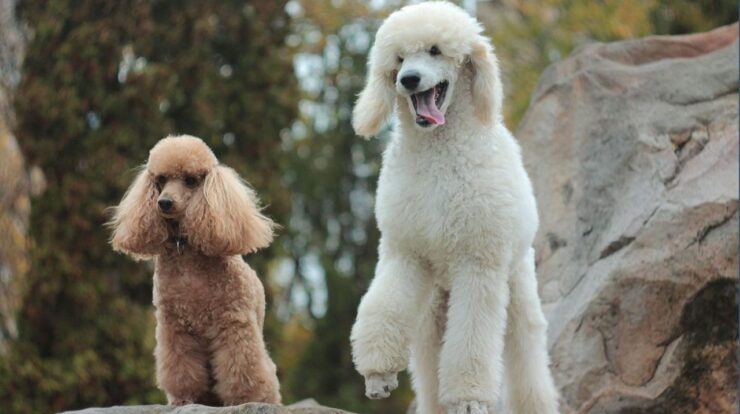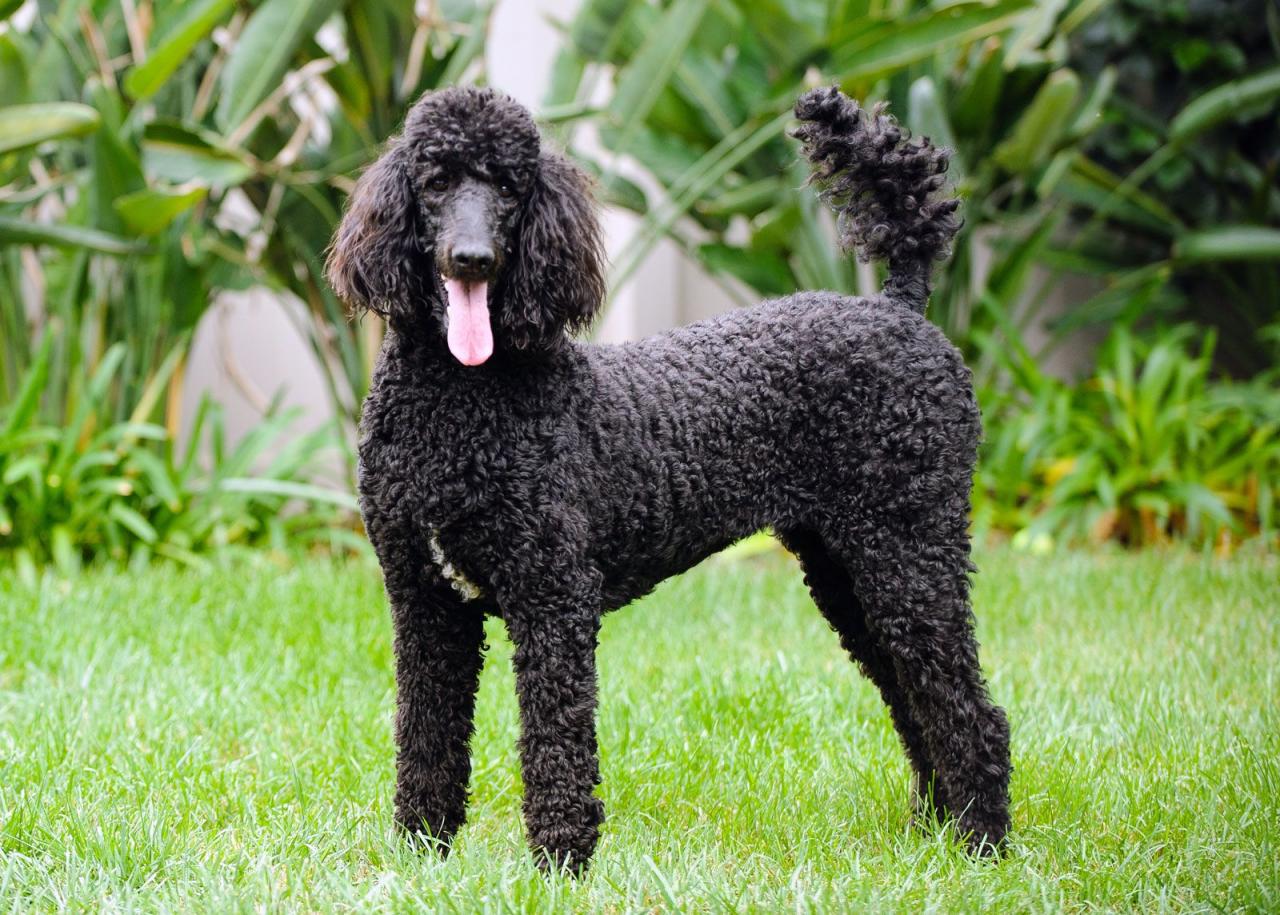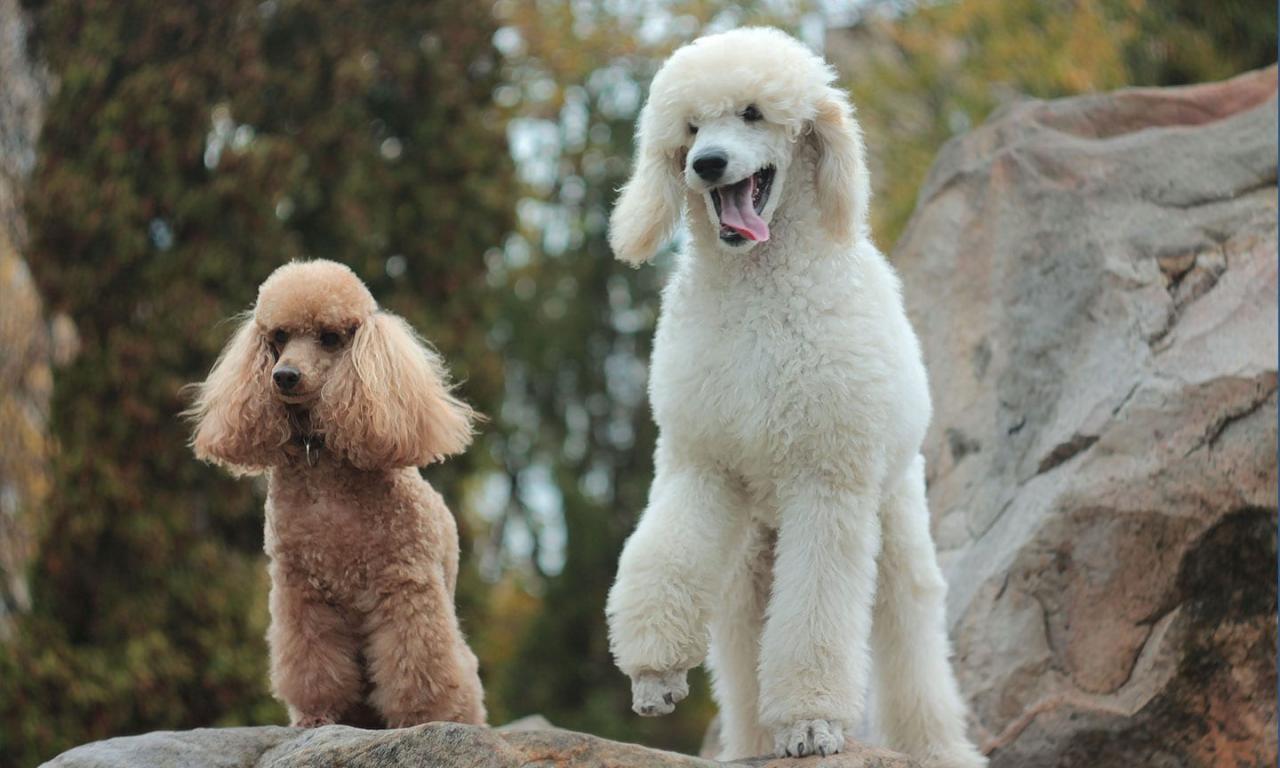
Poodle meaning delves into the captivating history and multifaceted nature of this iconic breed, unraveling its linguistic roots, distinctive characteristics, and profound cultural impact.
From its humble origins to its celebrated status as a beloved companion and cultural icon, the poodle’s story is a testament to its enduring charm and adaptability.
Etymology and Origin
The word “poodle” is believed to have originated from the German word “pudel,” which means “to splash in water.” This is fitting, as poodles are known for their love of water and their webbed feet, which make them excellent swimmers.
The first recorded use of the term “poodle” in English was in the early 1600s. At that time, poodles were primarily used as hunting dogs, and their curly coat was prized for its ability to protect them from the cold water they often worked in.
Breed Characteristics

Poodles are known for their distinct physical traits, including their curly coat, hypoallergenic nature, and size variations. Their coat is made up of tightly curled ringlets that are dense and water-resistant. Poodles are also hypoallergenic, making them a good choice for people with allergies.
Poodles come in three sizes: Toy, Miniature, and Standard. Toy Poodles weigh between 4 and 6 pounds, Miniature Poodles weigh between 10 and 15 pounds, and Standard Poodles weigh between 45 and 70 pounds. All three sizes are known for their intelligence, trainability, and affectionate nature.
Poodle Types, Poodle meaning
| Type | Average Weight | Average Height | Coat Characteristics |
|---|---|---|---|
| Toy | 4-6 pounds | 10 inches | Dense, curly ringlets |
| Miniature | 10-15 pounds | 15 inches | Dense, curly ringlets |
| Standard | 45-70 pounds | 22 inches | Dense, curly ringlets |
| Giant | 60-100 pounds | 26 inches | Dense, curly ringlets |
In addition to their size, poodles also vary in coat color. The most common colors are black, white, and apricot, but poodles can also be found in a variety of other colors, including blue, cream, and silver.
Poodles in Culture: Poodle Meaning
Poodles have been featured in literature, art, and popular culture for centuries. One of the most famous poodles is Fifi, the dog owned by the cartoon character Betty Boop. Poodles have also been featured in paintings by famous artists such as Rembrandt and Van Gogh.
In recent years, poodles have become increasingly popular as companion animals. Their intelligence, trainability, and affectionate nature make them a great choice for families with children. Poodles are also known for their loyalty and protectiveness, making them a good choice for people who want a dog that will keep them safe.
Last Recap

In conclusion, poodle meaning encapsulates the essence of this extraordinary breed, shedding light on its historical evolution, physical attributes, cultural significance, and the multifaceted qualities that make poodles such cherished companions and cultural icons.
FAQs
What is the origin of the word “poodle”?
The term “poodle” is derived from the German word “pudel,” meaning “to splash in water,” alluding to the breed’s affinity for aquatic activities.
What are the key physical traits of poodles?
Poodles are renowned for their distinctive curly coat, hypoallergenic nature, and size variations, ranging from the petite Toy to the majestic Giant.
How many types of poodles are there?
Poodles are classified into four distinct types: Toy, Miniature, Standard, and Giant, each with unique weight, height, and coat characteristics.
What is the cultural significance of poodles?
Poodles have graced literature, art, and popular culture for centuries, associated with royalty, the arts, and a sophisticated lifestyle.
What are common health issues associated with poodles?
Poodles may be prone to certain health conditions, including hip dysplasia, progressive retinal atrophy, and Addison’s disease, requiring regular veterinary care and monitoring.





